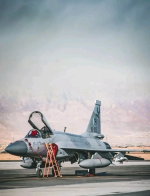The JF-17 is a product of both the PAF's requirements and its reality at different points in time.All things considered, Pakistan made do with what it had pretty well.
The design we see today is a result of what Chengdu could offer at the PAF's budget in the early 1990s. Had the JF-17 design work been extended past 1999 (rather than frozen and kicked into development), we may have seen a more ambitious design akin to the Tejas (relaxed stability, heavy composite use, etc) because Chengdu's design capacities evolved since 1994 (thanks to J-10).
Perhaps this other fighter would've been more attractive to the market, but it'd only be entering service now (like Tejas Mk1A), and at a higher cost. But the option was there, the PAF preferred the time, expediency, and lower cost. @Oscar








